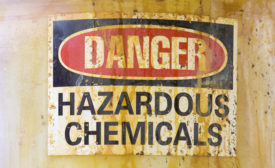Home » Keywords: » chemical facility safety and security
Items Tagged with 'chemical facility safety and security'
ARTICLES
Game-changing chemical management
Read More
Chemical protection is needed for working hands
Skin disease cases exceed recordable respiratory illnesses
February 5, 2018
Multi-hazard protective clothing comes of age
Garments address flash fire, arc flash, chemical splash & poor visibility
October 5, 2017
Scientists determine how the environment contributes to disease
NIH researchers find link to cancer, diabetes, Alzheimer’s
November 26, 2014
TSCA reform moves forward with House hearing
Both sides call for revisions
November 6, 2013
California moves to regulate toxic chemicals in consumer products
Manufacturers will have to find safer alternatives
October 3, 2013
EVENTS
Never miss the latest news and trends driving the safety industry
eNewsletter | Website | eMagazine
JOIN TODAYCopyright ©2024. All Rights Reserved BNP Media.
Design, CMS, Hosting & Web Development :: ePublishing










